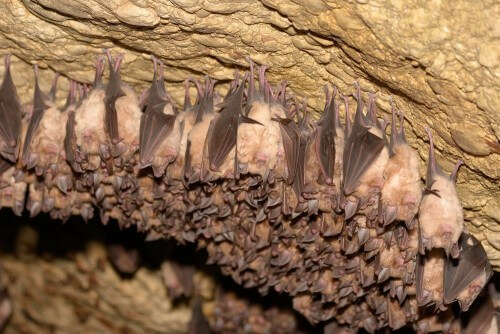Flying mammals offer a new way to study human speech

In 1970, child welfare authorities in Los Angeles found a 14-year-old girl, nicknamed "Jenny", who had been living in almost total social isolation since birth. As a lucky participant in an unplanned experiment, Jenny aroused the curiosity of psychologists and linguists who wondered if she was still capable of acquiring language, even though she had not been exposed to it until now.
Jenny did help the researchers improve and define the critical period for learning to speak: she quickly acquired vocabulary, but grammar skills eluded her. However, fortunately, the cases where researchers come across such an object for their research are rare. The scientists therefore turned to animals as a substitute for humans in such isolation studies. Most of the studies with this approach used birds, songbirds and hummingbirds, who learn like us, over time, how to communicate with each other through sound. This talent is not innate.
Some mammals, such as elephants, whales and sea lions, also learn to communicate with their voices, but it is impractical to study them. Therefore, zoologists Yosef Perat, Mor Taub and Yossi Yuval from Tel Aviv University turned their efforts to the common fruit bat, a species that relies heavily on vocal communication, and whose pups mumble and chatter like babies before they master communication skills. The results of their study, the first in which bats were raised in sound isolation, were published in the spring of 2014 in the journal Science Advances.
Five bat pups were raised with their validations in isolation, so the pups did not hear conversations between adults, but enjoyed normal mothering. After they were weaned, the young people were gathered in a group and the communication between them was continuously monitored. Another group of five bats grew up in a colony, hearing from the day they were born the typical calls of their species. The colony-raised pups soon replaced their infant chatter with mature conversation, while the isolation-raised bats stuck to their immature vocalizations well into adulthood. They were able to produce mature voice expressions but could not get rid of the baby voices. But when the adult groups were combined, the isolated bats managed to match their peers. Yuval emphasizes that communication between bats is more like human language than birdsong. "Fruit bats make vocal expressions in the context of a conversation, such as 'move away,'" he says. "They don't sing to advertise their social status, like birds do. It is much more similar to the context in which humans use speech."
Erich Jarvis, a Duke University neurobiologist who studies vocal learning in birds, agrees that bats, being mammals like us, lend themselves to research that can reveal more details about human language acquisition. But he adds that the bats in the studies may have received non-vocal feedback from their validations, and that this may have affected their vocal learning. Meanwhile, the researchers are trying to understand what the bats are even talking about, both in the laboratory and in the wild. And maybe the insights about their vocabulary will also resonate in our art of language.
The article was published with the permission of Scientific American Israel

2 תגובות
In the neighborhood where I lived in Jerusalem 35 years ago lived a family of bats. At night I would stand on the street and call out "Tick Tick Tick Tick Tick Tick Tick Tick" and a group of up to 20 bats would emerge from somewhere and fly in my direction 🙂